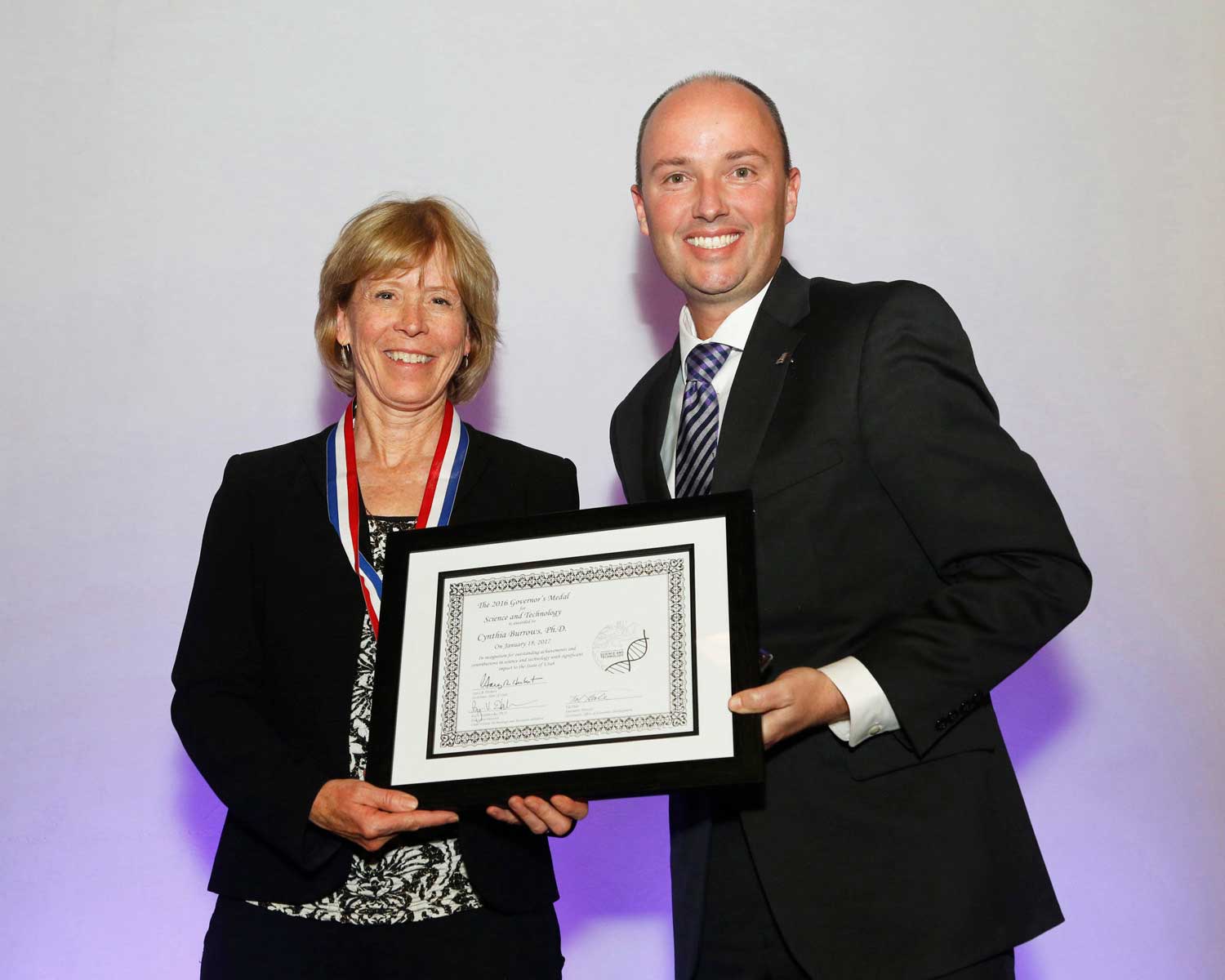
Cindy Burrows has been selected as the recipient of the 2018 Willard Gibbs Medal of the Chicago Section of the American Chemical Society. This is one of the most prestigious honors in chemistry, its purpose “To publicly recognize eminent chemists who, through years of application and devotion, have brought to the world developments that enable everyone to live more comfortably and to understand this world better.” Medalists are selected by a national jury of eminent chemists from different disciplines, the nominee being a chemist who, because of the preeminence of his/her work in and contribution to pure or applied chemistry, is deemed worthy of special recognition. This award has been given since 1911, and only one previous Utah chemist (Henry Eyring, 1968) has received it. Please join us in congratulating Dr. Burrows on this impressive recognition!
The Willard Gibbs Award was founded in 1910 by William A. Converse (1862-1940), a former Chairman and Secretary of the Chicago Section of the American Chemical Society. The medal was named for Professor Josiah Willard Gibbs (1839-1903) of Yale University. Gibbs, whose formulation of the Phase Rule founded a new science, is considered by many to be the only American born scientist whose discoveries are as fundamental in nature as those of Newton and Galileo.
To read more about the award, go here.
Josiah Willard Gibbs (February 11, 1839 – April 28, 1903) was an American scientist who made important theoretical contributions to physics, chemistry, and mathematics. His work on the applications of thermodynamics was instrumental in transforming physical chemistry into a rigorous inductive science. Together with James Clerk Maxwell and Ludwig Boltzmann, he created statistical mechanics (a term that he coined), explaining the laws of thermodynamics as consequences of the statistical properties of ensembles of the possible states of a physical system composed of many particles. Gibbs also worked on the application of Maxwell’s equations to problems in physical optics. As a mathematician, he invented modern vector calculus (independently of the British scientist Oliver Heaviside, who carried out similar work during the same period).
